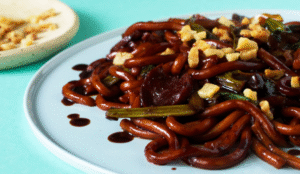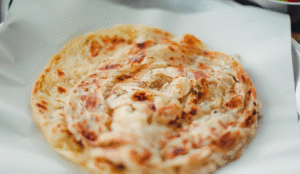Malaysia Snacks Unwrapped: Decoding What’s Inside Your Favorite Treats
Malaysia, a land of rich cultural diversity, is celebrated not only for its beautiful landscapes and vibrant traditions but also for its incredible variety of food. Among the most beloved and nostalgic culinary delights are Malaysia snacks, particularly the colorful and flavorful kuih-muih (bite-sized traditional cakes and desserts). These delicacies are more than just sweets — they are a reflection of Malaysia’s multicultural heritage, offering insights into the culinary practices of the Malay, Chinese, Indian, Peranakan, and indigenous communities.
In this article, we’ll explore the delightful world of Malaysia snacks, diving into the history, variety, and cultural significance of these traditional treats. Whether you’re a local revisiting childhood favorites or a traveler eager to taste authentic Malaysia desserts, this guide will take you on a flavorful journey through time.
Frequently Asked Questions (FAQ)
1. What is kuih dessert?
Kuih (pronounced kway) is a traditional bite-sized snack or dessert commonly found in Malaysia, often made using rice flour, coconut milk, palm sugar, and natural coloring from ingredients like pandan or butterfly pea flower. Unlike Western desserts, kuih is not always overly sweet—instead, it offers a balance of flavors and textures, from chewy and sticky to soft and crumbly. Kuih can be steamed, boiled, or fried, and is typically enjoyed during breakfast, tea time, or festive celebrations.
2. What is Malaysian Kuih?
Malaysian kuih refers to a wide variety of traditional snacks and desserts that are part of the country’s rich culinary heritage. These colorful and flavorful treats are deeply rooted in Malay, Chinese, and Nyonya (Peranakan) traditions. Some popular examples include Kuih Lapis (layered cake), Onde-Onde (glutinous rice balls with palm sugar), and Kuih Seri Muka (a two-layered custard and glutinous rice kuih). They are usually sold at markets, street stalls, and even homemade for special occasions like Hari Raya or Chinese New Year.
3. Where did kuih come from?
Kuih has multicultural origins and evolved over generations in Southeast Asia. In Malaysia, kuih was shaped by the influences of the Malay, Chinese, Indian, and Nyonya communities. The word “kuih” itself comes from the Hokkien Chinese word “kueh,” but the ingredients and methods reflect a fusion of different ethnic cooking traditions. For example, Malay kuih often uses coconut and banana leaves, while Nyonya kuih blends Chinese techniques with local Malay ingredients. This melting pot of culture is what makes Malaysian kuih so unique and diverse.
4. What is the national dessert of Malaysia?
While Malaysia doesn’t officially have a national dessert, many people would agree that Kuih Lapis or Ais Kacang (shaved ice with sweet toppings) come close to representing the country’s dessert identity. However, Kuih Lapis, a colorful layered steamed cake, is often considered symbolic of Malaysian kuih due to its widespread popularity and nostalgic value across all cultures. It’s a staple at festive gatherings, and its multi-colored layers even represent the multicultural layers of Malaysian society.
5. What is the most famous dessert in Malaysia?
One of the most famous desserts in Malaysia is Cendol. This refreshing treat is made with shaved ice, coconut milk, green rice flour jelly, and palm sugar syrup. It’s incredibly popular in Malaysia’s hot and humid climate and often found in food courts and roadside stalls. Cendol is loved by locals and tourists alike for its sweet, creamy, and slightly smoky flavor. Other famous contenders include Kuih Lapis, Ais Kacang, and Onde-Onde, depending on the region and cultural preference.
The Cultural Roots of Kuih-Muih
The term “kuih” (pronounced as ‘kway’) broadly refers to a wide range of sweet or savory snacks made from rice flour, coconut, palm sugar, and pandan. These ingredients are staples in traditional Malaysia kuih, giving them their distinct taste and texture. The making of kuih has been passed down through generations, often taught by grandmothers and mothers as part of a treasured culinary heritage.
Each ethnic group in Malaysia contributes its unique take on kuih. For instance:
- Malay kuih often features glutinous rice, pandan, and gula Melaka (palm sugar).
- Chinese kuih, like ang ku kuih or kuih lapis, are typically steamed and reflect influences from Southern China.
- Indian snacks, like laddu and halwa, are fragrant with ghee and spices, adding a different depth to Malaysian traditional snacks and sweets.
- Peranakan kuih, a fusion of Chinese and Malay influences, stand out for their intricate designs and vibrant colors.
These snacks are usually enjoyed during breakfast, afternoon tea (known locally as “minum petang”), or festive occasions like Hari Raya, Chinese New Year, and Deepavali.
Top Traditional Malaysia Snacks and Kuih-Muih You Must Try
Let’s delve into some of the most iconic Malaysia snacks that have stood the test of time. From sweet to savory, steamed to fried, there’s something for every palate.
1. Kuih Lapis
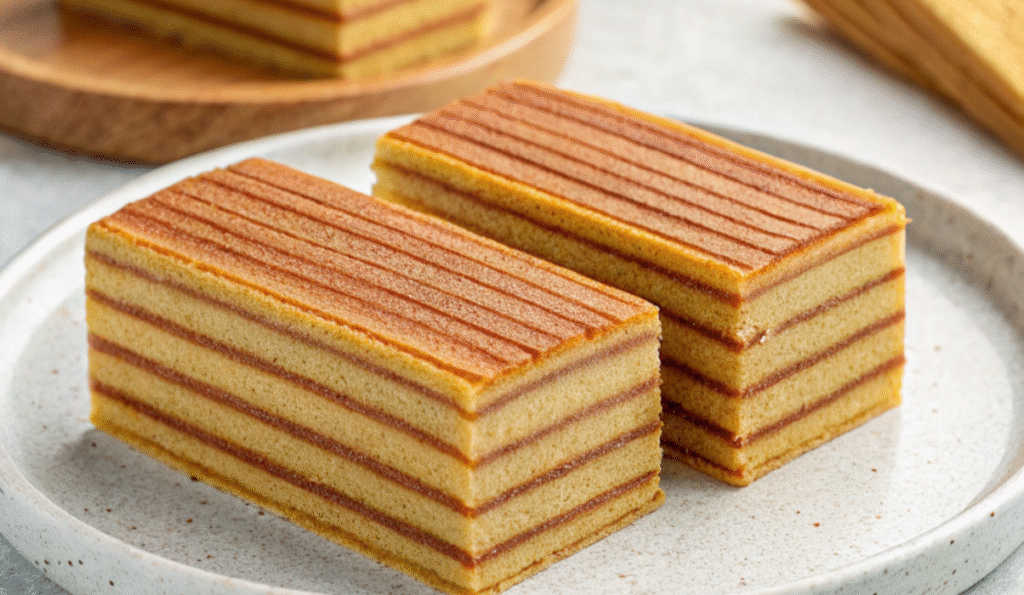
This colorful, layered snack is a staple at Malaysian homes and events. Made from rice flour, coconut milk, and sugar, kuih lapis is steamed one layer at a time, resulting in a rainbow-like appearance. Children love peeling and eating it layer by layer — a testament to how food can be both fun and flavorful.
2. Onde-Onde (Kuih Buah Melaka)
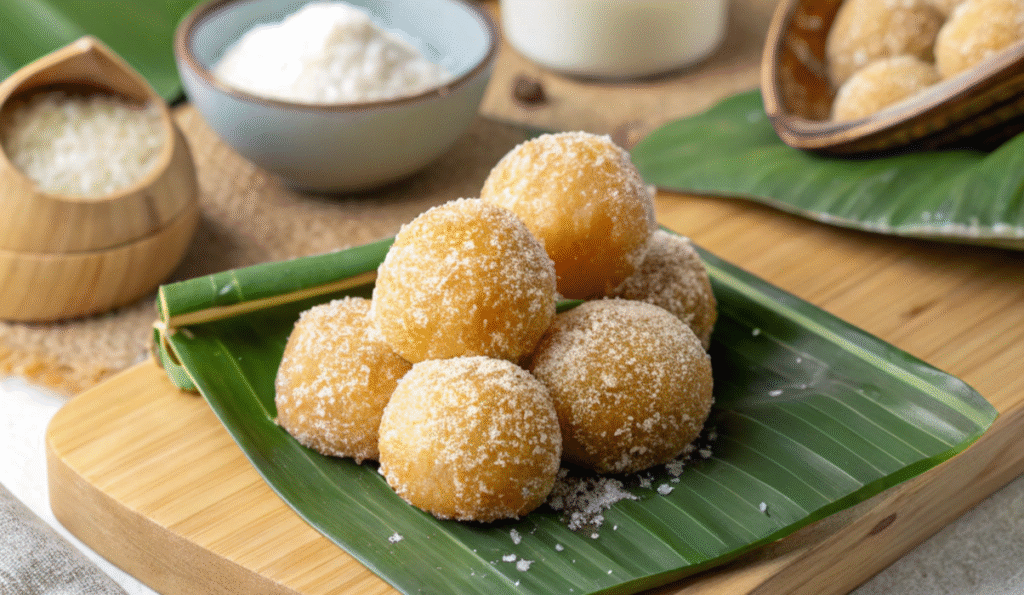
Onde-Onde is a chewy green balls, filled with molten palm sugar and coated in grated coconut, are a hit among locals and tourists alike. The burst of warm gula Melaka in your mouth is an unforgettable experience, showcasing the essence of traditional Malaysia kuih.
3. Kuih Seri Muka
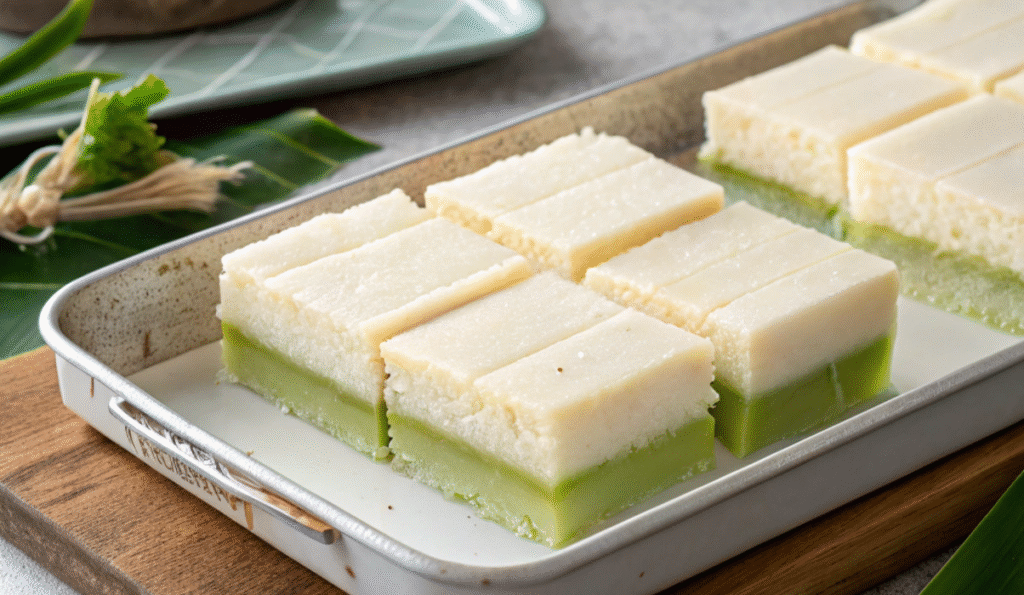
Kuih Seri Muka is a two-layered delight, seri muka combines glutinous rice at the bottom with a pandan-coconut custard top. It’s rich, slightly salty, and perfectly balanced in sweetness — a reflection of how Malaysia snacks master the harmony of flavors.
4. Kuih Talam
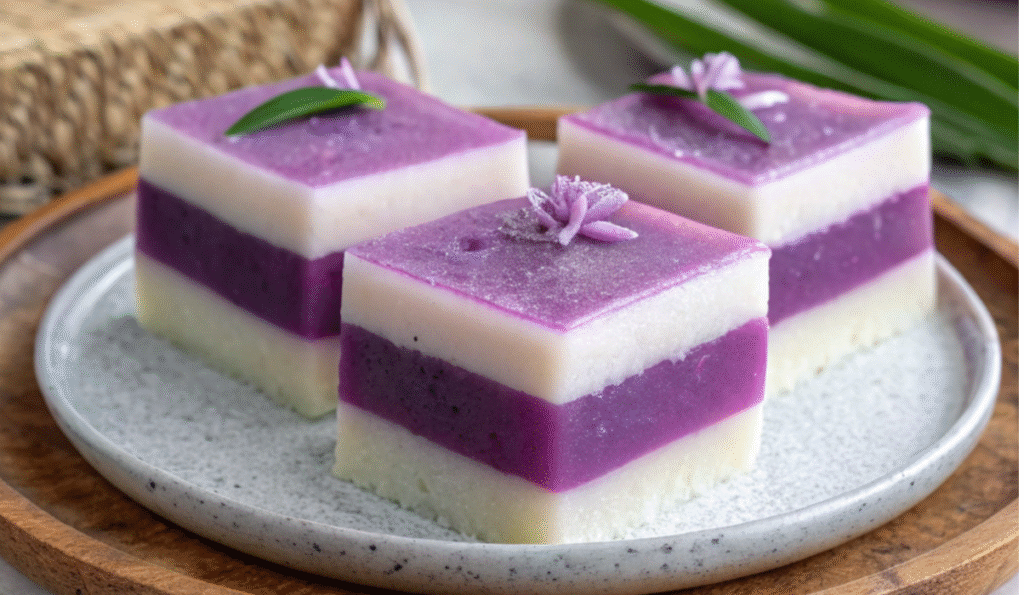
Kuih Talam is a snack has a distinctive two-tone look, usually with a green pandan base and a white coconut milk top. Kuih talam is not overly sweet and often found at local markets and festive tables.
5. Pisang Goreng
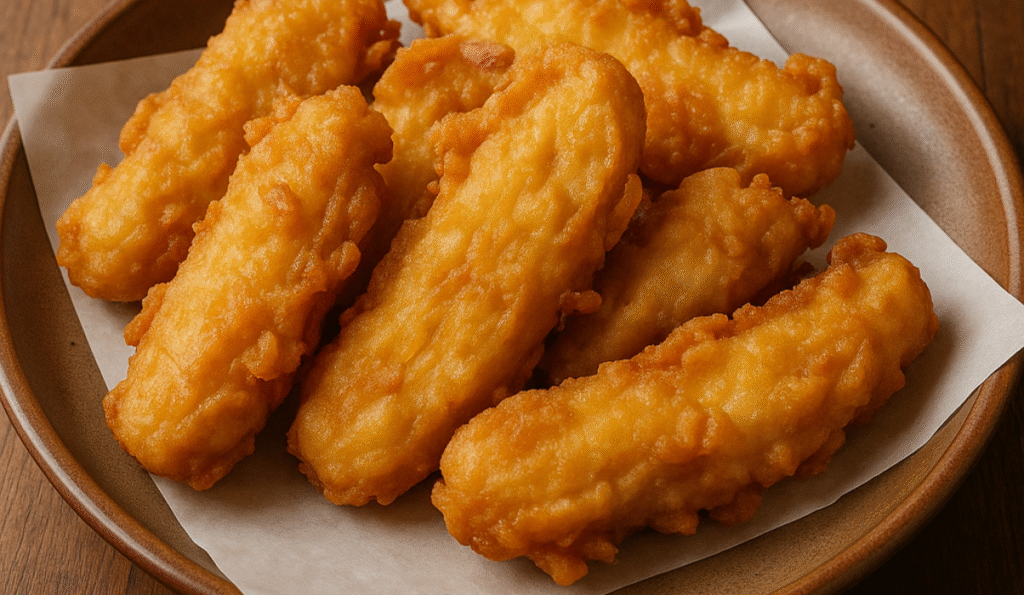
While technically a fried snack, pisang goreng (fried banana fritters) are a quintessential part of Malaysia snacks culture. Crispy on the outside and soft on the inside, they’re best enjoyed hot from the roadside stalls.
6. Apam Balik
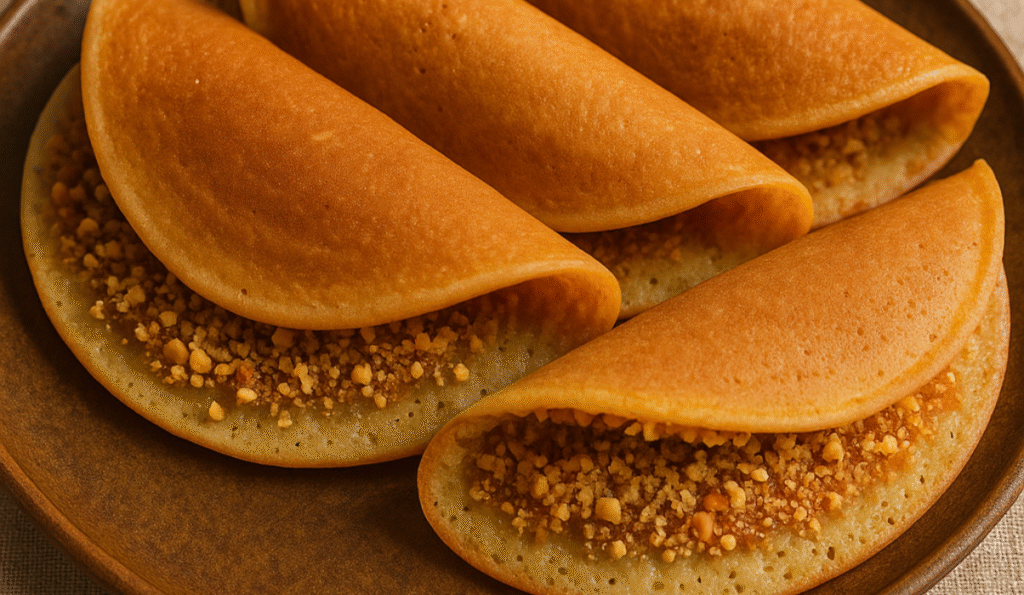
A crispy pancake folded with a filling of crushed peanuts, sugar, and sometimes corn, apam balik is popular at night markets. It’s a crowd-pleaser that balances sweet and savory flavors in every bite.
7. Pulut Inti
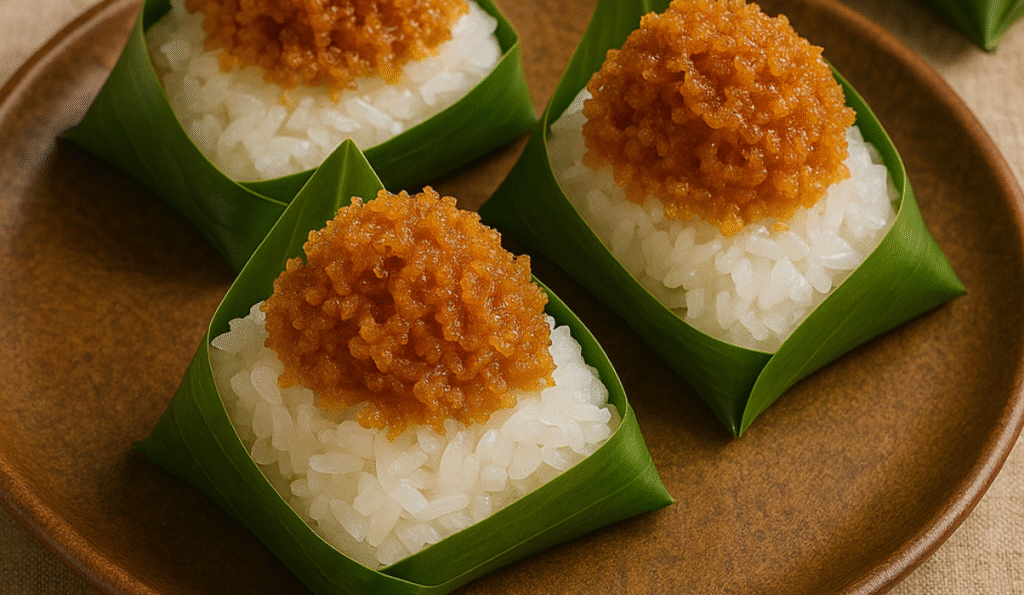
Sticky glutinous rice topped with sweet coconut floss, pulut inti is usually wrapped in banana leaf — an eco-friendly and aromatic touch that enhances its appeal.
8. Lepat Pisang
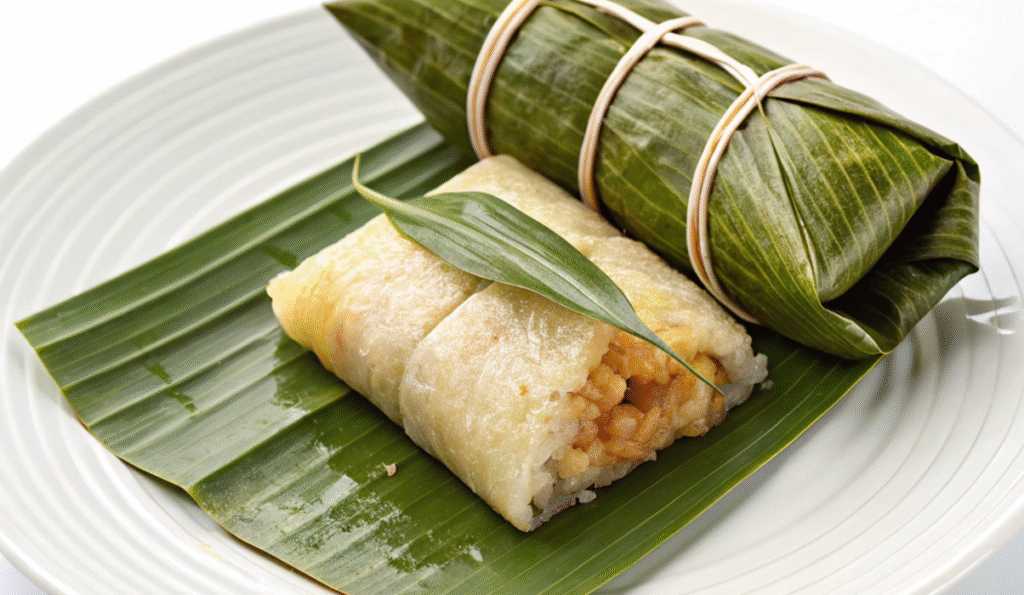
Made from mashed bananas, grated coconut, and flour, lepat pisang is steamed in banana leaves, offering a soft texture and deep banana flavor.
9. Dodol
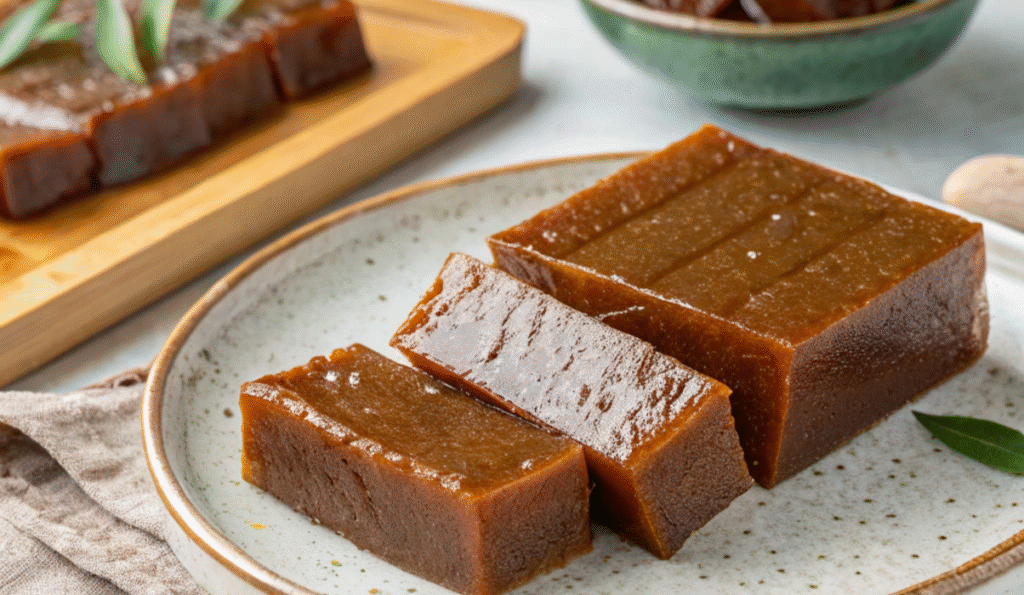
Dodol is a sticky, toffee-like dessert made from coconut milk, palm sugar, and glutinous rice flour. It’s labor-intensive to prepare, often requiring hours of continuous stirring, but the end result is a chewy delight typically enjoyed during festivals.
10. Kuih Keria Gula
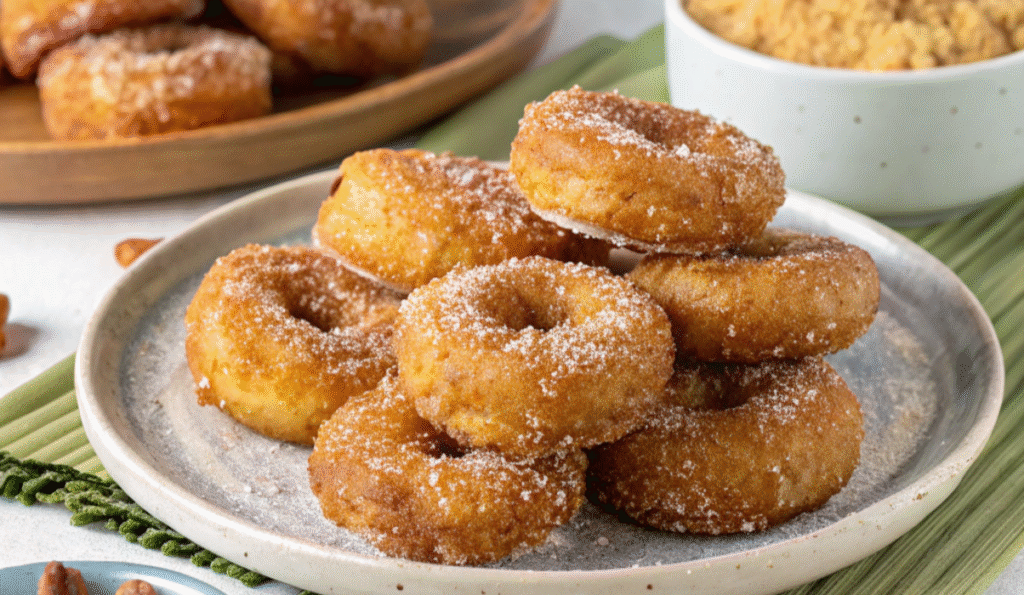
These doughnut-like snacks are made from sweet potatoes and coated in a caramelized gula Melaka glaze. Kuih Keria Gula is a great example of how Malaysia desserts combine local ingredients with simple techniques to create mouth-watering results.
Regional Kuih Specialties You Might Not Know
Each Malaysian state brings its own flair to kuih-making. For instance:
• Kelantan: Famous for kuih akok, a sweet egg-based kuih with a smoky aroma thanks to its traditional charcoal grilling.
• Sabah: Home to pinjaram, a deep-fried green kuih shaped like a flower and popular during festive seasons.
• Sarawak: Offers kuih jala, a lacy snack made by pouring batter through a coconut shell mold into hot oil.
• Johor: Known for kuih kole kacang, a rich, sticky mung bean cake with a pandan top layer.
These regional snacks highlight the culinary diversity within Malaysia snacks, showcasing the creativity of local communities.
How Traditional Snacks Reflect Malaysian Identity
Food is a powerful cultural symbol, and Malaysia snacks are no exception. Each kuih tells a story — of ancestry, trade, colonization, and adaptation. They reflect the ingredients native to the region and the blending of cultures through marriage, migration, and commerce.
In fact, the humble act of sharing kuih during religious or family gatherings plays a significant role in promoting unity and understanding among Malaysia’s multiracial society. During Hari Raya, Chinese New Year, or Gawai, you’ll often find tables laden with Malaysian traditional snacks and sweets, regardless of the host’s ethnicity.
Preserving Traditions: Voices from the Kitchen
Mak Cik Fatimah, a 72-year-old kuih maker in Terengganu, shares, “I learned to make seri muka from my grandmother when I was a child. Now, I sell it at the morning market every week. People come back for the taste they grew up with.”
Similarly, in Penang, Peranakan chef Geraldine Lee runs weekend classes teaching young Malaysians how to make ang ku kuih. “It’s not just about the food; it’s about keeping stories alive,” she says.
These voices remind us that traditional Malaysia kuih is not just about flavor — it’s a bridge between generations.
The Art of Making Kuih: A Dying Tradition?
While many Malaysians still enjoy kuih, the art of making them from scratch is slowly fading. Urban lifestyles, long working hours, and the abundance of ready-made alternatives mean that fewer people are learning the intricate techniques required to make traditional Malaysia kuih at home.
Some kuih require specific timing, precise measurements, and even handmade tools like pandan extract grinders or banana leaf molds. Sadly, many younger generations are unfamiliar with these processes, risking the loss of this culinary heritage.
However, there’s hope. In recent years, there’s been a growing movement to revive traditional recipes. Food bloggers, cooking schools, and even social media platforms are promoting homemade kuih, encouraging people to reconnect with their roots.
Where to Find Authentic Malaysia Snacks
If you’re traveling in Malaysia and want to try these traditional snacks, here are some recommended places:
- Wet Markets: Most morning markets (pasar pagi) have stalls selling fresh kuih.
- Night Markets (Pasar Malam): A treasure trove for hot and fresh Malaysia snacks — try them while strolling through the bustling crowd.
- Peranakan Restaurants: Especially in Melaka and Penang, these eateries often include authentic Malaysia desserts on their menus.
- Village Stalls and Warungs: Some of the best kuih can be found in humble roadside setups run by elderly locals.
- Festive Bazaars: During Ramadan, Gawai, and other festivals, special snack stalls pop up with rare kuih varieties.
Modern Twists on Traditional Malaysia Kuih
As food evolves, so do Malaysia snacks. Many young chefs and food entrepreneurs are experimenting with modern presentations while staying true to the traditional base. Think kuih lapis cheesecake, onde-onde cupcakes, or gula Melaka gelato.
These innovations are not only drawing younger audiences but also helping to preserve kuih culture by adapting it to contemporary tastes. While purists may prefer the original versions, fusion kuih can serve as a gateway for the uninitiated to appreciate the heritage behind Malaysian traditional snacks and sweets.
Why Tourists Should Try Malaysia Desserts
If you’re visiting the country, don’t leave without trying Malaysia desserts. Not only are they delicious, but they also offer an authentic way to experience Malaysian culture. Through each bite, you’re tasting the history and diversity of the nation.
Many tourists are surprised by the unique textures and flavors — the chewiness of glutinous rice, the earthiness of palm sugar, the floral notes of pandan. Unlike Western desserts, which often emphasize sugar and richness, traditional Malaysia kuih often balances sweetness with coconut creaminess and savory undertones.
Tips for Enjoying Traditional Snacks in Malaysia
- Try a variety – Don’t stop at just one or two. The best way to appreciate the depth of Malaysia snacks is to try many.
- Ask locals – Malaysians are proud of their food heritage and will happily point you to the best kuih sellers nearby.
- Eat fresh – Kuih are best enjoyed on the same day they’re made. Many don’t contain preservatives.
- Pair with tea or kopi – Traditional snacks go perfectly with teh tarik or a cup of Malaysian-style black coffee.
Preserving a Sweet Legacy
In a rapidly modernizing Malaysia, preserving the art and appreciation of traditional kuih is crucial. These snacks are more than food — they are edible stories, cultural symbols, and emotional connections to home and heritage.
As you explore the world of Malaysia snacks, remember that each kuih represents a moment in time, lovingly recreated through generations. Whether you’re making them at home, buying them at a stall, or tasting them for the first time, you’re participating in a rich and delicious tradition.
A Look Ahead: Innovations and Cultural Continuity
Looking toward the future, there’s a renewed interest among younger generations to reinterpret and preserve these time-honored treats. Culinary institutions in Malaysia have started offering short courses on traditional kuih-making, helping curious learners understand the science and art behind these desserts. In urban cafés, it’s becoming increasingly common to see traditional kuih served alongside espresso shots and cold brews, bridging the gap between old and new.
Furthermore, the global diaspora of Malaysians has led to an international appreciation for Malaysia snacks. From food pop-ups in London to cultural fairs in Melbourne, kuih is making its mark far beyond the Malaysian peninsula. Some chefs abroad have begun sourcing ingredients like pandan and gula Melaka to recreate authentic flavors for eager international foodies.
Digital platforms like YouTube and TikTok have also fueled the revival. Malaysian grandmothers and food influencers now share easy-to-follow kuih recipes, generating millions of views. This online accessibility allows even Malaysians living abroad to reconnect with their culinary roots through Malaysia desserts.
With this growing global appreciation, there is also a push for geographical indication (GI) labeling for certain iconic kuih to protect their authenticity. Much like Champagne or Parmesan, GI labeling ensures that specific Malaysia snacks are recognized and respected for their origin, ingredients, and methods of preparation.
In conclusion, the story of traditional Malaysia kuih is one of resilience, reinvention, and reverence. From humble village kitchens to international showcases, these snacks are more than just food — they are a delicious testament to Malaysian identity, community, and creativity.
So, the next time you savor a piece of kuih, know that you’re not just tasting a dessert — you’re partaking in a cultural legacy that continues to evolve, inspire, and unite people across generations and continents.
Final Thoughts
Traditional kuih-muih are a vibrant, flavorful part of Malaysia’s culinary landscape. From their historical roots to their role in modern gastronomy, these desserts continue to charm and captivate. If you ever find yourself in Malaysia, don’t miss the opportunity to savor these delightful bites that carry the soul of the nation.
Whether you’re exploring Malaysian traditional snacks and sweets at a street market or making traditional Malaysia kuih in your kitchen, know that you’re tasting something truly unique — a small but powerful piece of Malaysian identity, wrapped in pandan leaf and sweetened with heritage.

